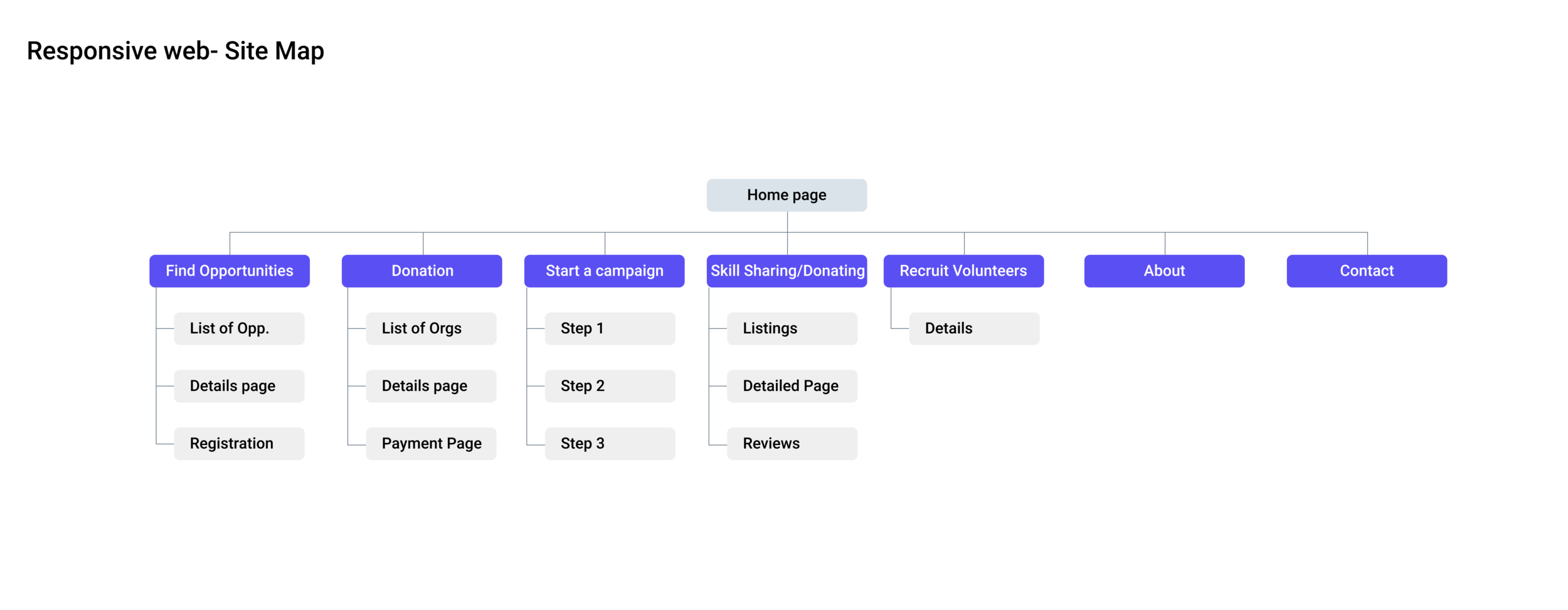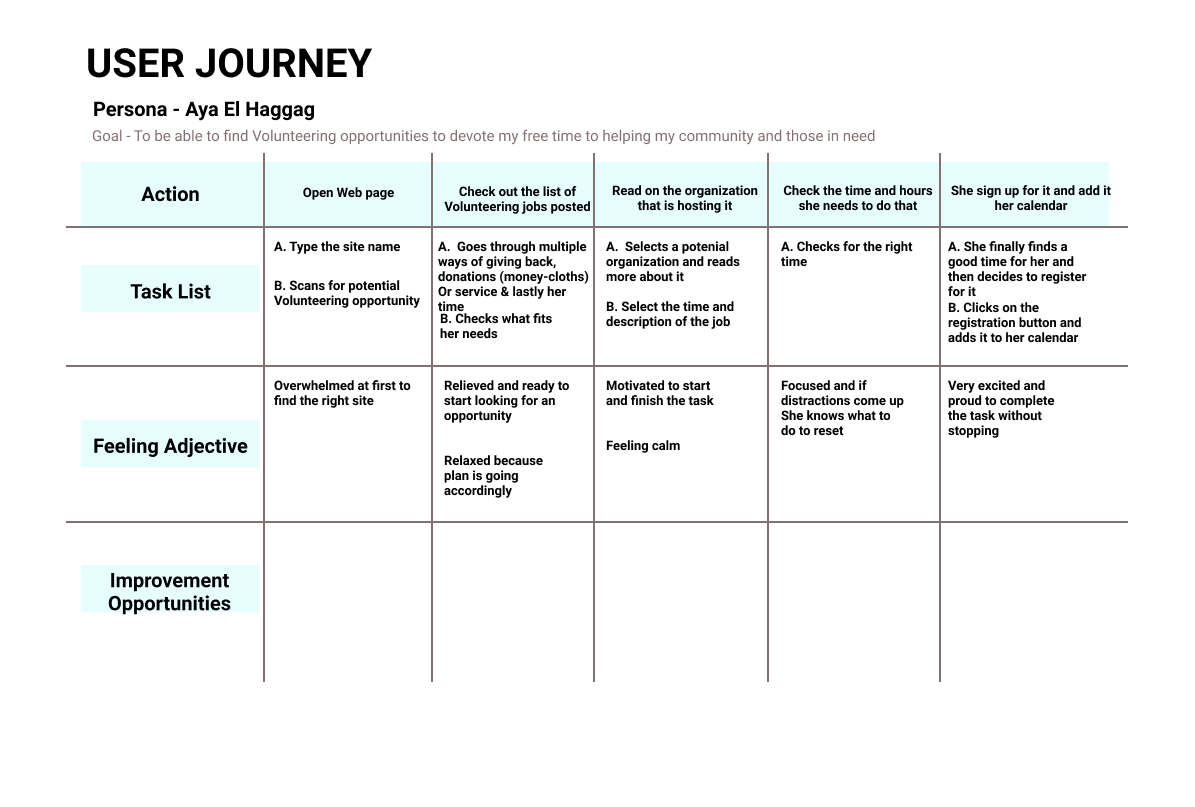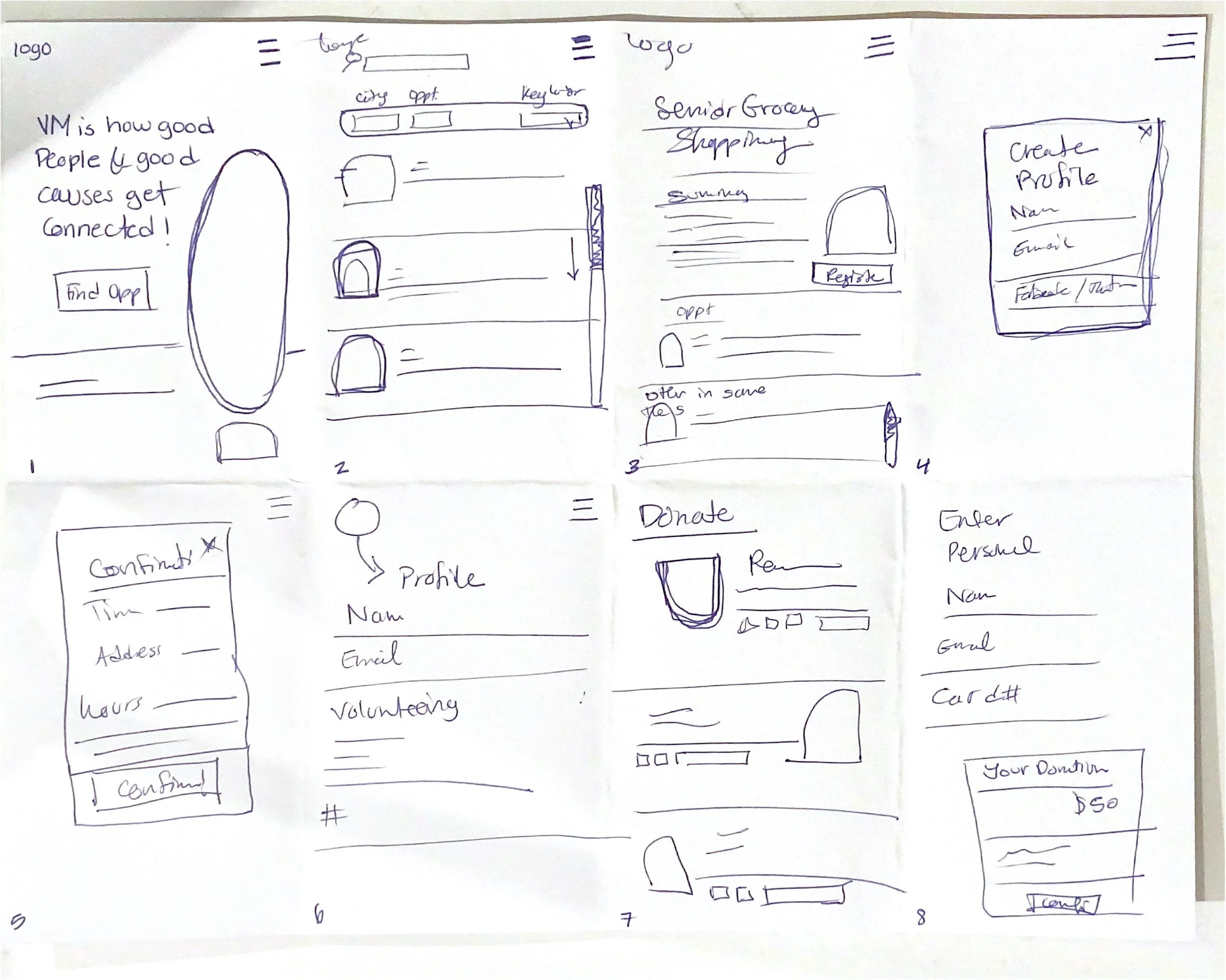My Role
Product Designer, responsible for the entire design process including user flows, interactions and user research. Case Study for UX|UI Google Certificate
Timeline
September- October 2021
PROBLEM
How might we connect the volunteers looking for opportunities to give back, to the organizations needing the time, effort, and support ?
There are many none profit organizations out there that offer help to those in-need. All organizations are built on donations and they all do one thing very well, accept donations. What many of them lack is an organized way to connect volunteers to people in-need. Many good people love to dedicate not just money but time and effort into making positive impact in their communities. Many of those don’t know where to go or how to start.
THE SOLUTION
Connectivity & Diversity = inclusion
A responsive website & mobile app. that connects good people with good causes to make the world a better place.
RESEARCH
A way to connect volunteers to opportunities within their schedule and needs
COMPETITIVE ANALYSIS + THE GAPThe competition had NO VARIETY OF OPPORTUNITIES to give back Or SKILL SHARING options.
The market analysis showed that most of the competitors don’t have a verity of different opportunities or skill sharing options to allow volunteers to provide support other than donations.
USER INTERVIEWS
My interviewees were 80% more likely to volunteer when they found more volunteering options other than donating money like skill sharing and offering support and help.
Support + Skill Sharing are keys!
I conducted interviews with 8 Adults who have tried to find a way to volunteer and struggled to get connected to those who are in-need. I’ve asked them questions below to find trends on why they failed to find the right volunteering opportunities for what suits their schedule, and support type.
THE MAIN INSIGHTHaving a platform that connects volunteers with non profit organizations that provides more than just donations is key.
Based on the trends in my affinity map, I’ve noticed that if volunteers don’t know where to go or start to do good, they tend to not get involved or do anything at all. There is no place for people to build meaningful relations whiling giving back to their communities.
Persona’s
DESIGN PROCESSSite Map and User Flows
At first, I spent 3 weeks drafting and sketching the app from paper wireframes to digital wireframes and adding features that will help my user to benefit. It was a bit of hard work but I was happy with the results.
DESIGN PROCESSIdeation + Rough Sketches
At first, I spent 3 weeks drafting and sketching the app from paper wireframes to digital wireframes and adding features that will help my user to benefit. It was a bit of hard work but I was happy with the results.
Low-fidelity Mock-ups
Research ProcessUsability Testing
Many of my interviewee felt good about the low-fidelity mock-up they were able to complete the tasks however in some parts they felt there are rooms for improvements. So I made an Affinity Map to guide me to identify P0, P1 and P2
TESTING + IMPROVEMENTS2 major improvements in my design
Based on various feedback from 8 other peers + mentor feedback, I continually iterated my design over the span of 4 weeks- with 2 major improvements:
THE FINAL SCREENSUSER FLOWS
THE FINAL SCREENSThe Final Product
Responsive Web & Mobile App
THE FINAL SCREENSPrototype
CONCLUSION + LESSONS LEARNEDWhat I’d do differently next time.
What did I learn?
Designing the app has been a challenging and rewarding journey.
Through this project, I realized how important the research stage is. Users can tell you which direction your product should go and what you are missing. Only after in-depth interviews did I understand what was important to users and how to make this application truly valuable for them. I realized that by skipping the research phase, one could end up with a product that no one needs.
It took me one month to reach the point I am at right now, and these are my next steps:























